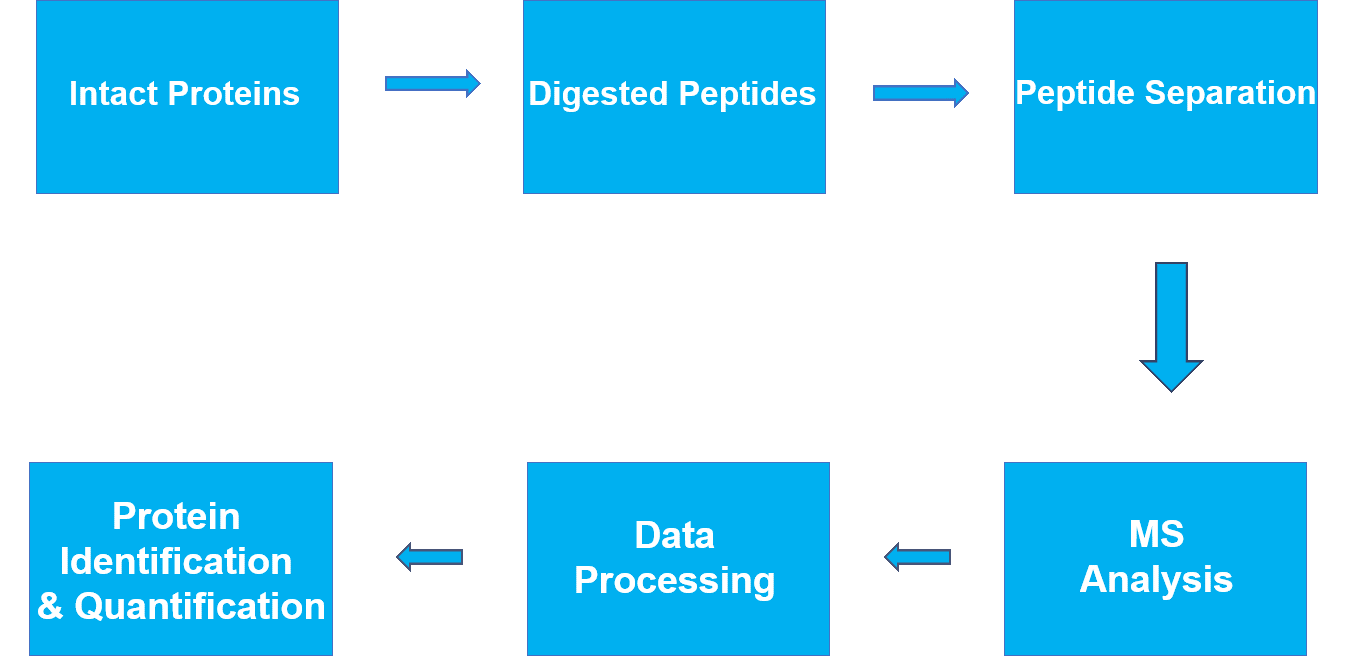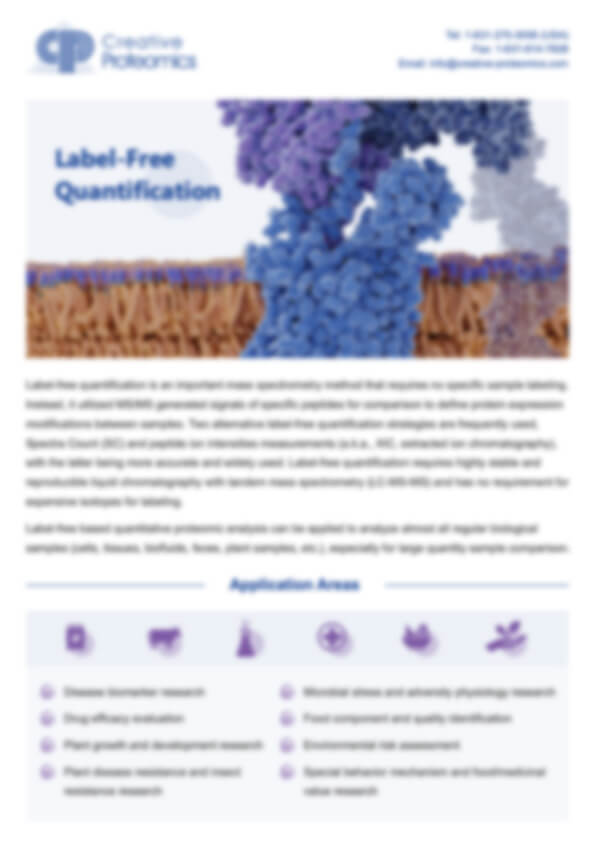Label-free quantification is a method of determining the relative amount of proteins in two or more biological samples, but unlike other quantitative methods, it does not use a stable isotope for chemical binding and labeling of proteins. Label-free quantitative proteomics approach provides a powerful tool to resolve and identify thousands of proteins from a complex biological sample. In this approach, proteins are first digested with a protease into a peptide mixture, which is subsequently analyzed by tandem MS (MS/MS) and identified by database searching. Relative protein abundance is determined by either spectral counting or chromatographic peak intensity measurements. Compared with other proteomic methods, the label-free quantification approach is rapid and more sensitive, which increases the protein dynamic range 3- to 4-fold as compared to 2DE. This method can also be automated with the ability for large-scale proteome analysis.
Label-free method for quantitation is very popular in proteomics community and may be the most straight-forward laboratory technique in the field. We summarize the pros and cons as follows:
| Category | Label-free | Labelled |
|---|---|---|
| Machine time | more | less |
| Wet lab complexity time | little | medium |
| Comparability of samples | difficult | easy |
| Data analysis | complex | complex |
| Study design | flexible | fixed |
Overview of Our Label-free Quantification Services
Our services enable the quantitative and qualitative analysis of complex samples such as cell lysates, tissue homogenates or bio-fluids. The results from this experiment provide a catalogue of the proteins present in all samples and a statistical analysis reflecting the changes in protein levels observed across the samples, along with relevant pathway information. Creative Proteomics' label-free quantification services consist of the following four fundamental steps:
- Sample preparation - protein extraction, reduction, alkylation and digestion;
- Sample separation and analysis - LC and MS/MS;
- Data analysis - identification, quantification and statistical analysis;
- Data interpretation

Figure 1. A typical workflow chart for LC/MS-based label-free protein quantification.
Label Free Proteome Quantitative Analysis Content
1. Data output statistics and quality control.
2. Protein identification analysis.
3. Quantitative protein analysis.
4. Protein GO analysis.
5. Protein Pathway analysis.
6. Protein COG analysis.
7. GO enrichment analysis of differential proteins.
8. Pathway enrichment analysis of differential proteins.
9. COG enrichment analysis of differential proteins.
Sample Requirements
Animal tissues ≥ 1 mg, plant tissues ≥ 10 mg, cells ≥ 106, body fluids (please consult us for specific sample information)
Protein extract: ≥300 μg
Deliverables
- Detailed reports including experimental procedures, instrument parameters, etc.
- Raw data and analysis results.
Benefits of Label-free Approach Working for Our Customers
- Simple experimental process
- No limit on the number of samples
- Suitable for multiple types of samples
- Excellent analytical reproducibility
Creative Proteomics can provide label-free quantification services in a time-saving and cost-efficient manner. Whatever your protein analysis need is, analysis of entire proteomes or quantification of specific proteins, Creative Proteomics has the right solution for you. With our advanced platform and experienced staff, we can accelerate your research about protein quantification, please feel free to contact us.
Q&A
Q1: What are the features of Label Free?
A: High stability and reproducibility requirements for liquid chromatography tandem mass spectrometry; low experimental consumption without expensive isotope labels as internal standards; less operation, thus making sample closest to the original state; overcomes the shortcomings of label quantification techniques for multiple samples.
Q2: What are the advantages and disadvantages of each of iTRAQ and Label Free?
A: Advantages of iTRAQ: it can label almost all kinds of samples; high throughput, can label 2-8 samples simultaneously; high reliability, qualitative and quantitative mass spectrometry in the low molecular weight region; can analyze post-translational modifications.
Disadvantages of iTRAQ: iTRAQ can bind to almost all proteins in the sample and is susceptible to contaminating proteins; The reagents are expensive and the operation is cumbersome.
Advantages of Lable Free: low sample requirement; easy to operate, not limited by the source of the sample and the number of channels; more proteins can be identified and quantified in a single experiment.
Disadvantages of Lable Free: pre-processing of raw data is required before extracting ion signal intensities, which is complicated; low accuracy, relying on mass spectrometry stability, and better differentiation efficiency for label-free when there is a large difference in protein abundance.






